As global temperatures continue to rise, many people are noticing a significant increase in their allergy symptoms. The warmer weather can bring a host of challenges for those who suffer from seasonal allergies, as it not only boosts the concentration of outdoor allergens but also affects the body in unexpected ways. From aggravating respiratory issues to triggering skin conditions, the impact of rising temperatures on allergies is undeniable. Understanding how climate change contributes to these problems and learning how to mitigate its effects is essential for anyone dealing with seasonal allergies. Here are 12 alarming signs that the rising temperatures might be making your allergies worse, and how you can take action to alleviate them.
1. Increased Sneezing and Runny Nose
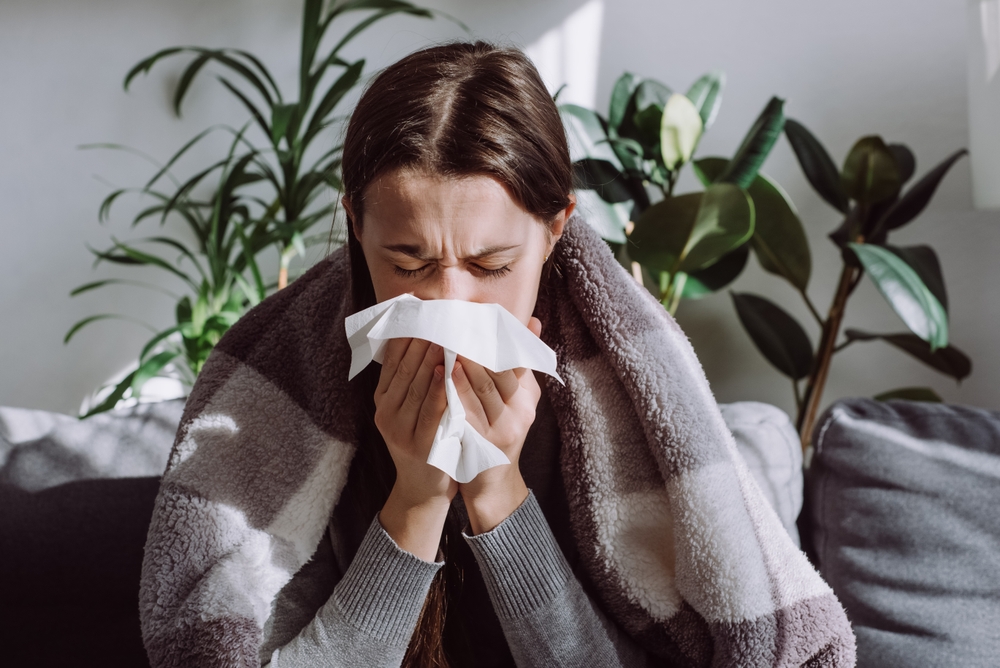
As temperatures rise, pollen counts tend to spike, especially in spring and summer. This influx of pollen in the air can trigger allergic reactions, with sneezing and a runny nose being some of the most common symptoms. When the body detects pollen as an invader, it releases histamines to protect itself, leading to these uncomfortable reactions. In warmer months, this process becomes more frequent as allergens are more abundant in the air. According to WebMD, allergic rhinitis, often triggered by pollen, leads to symptoms like sneezing and a runny nose. Pollen particles are lighter and can travel farther in the air when it’s warmer, increasing exposure to allergens.
These symptoms can become more pronounced, making it harder to focus or get through daily activities. You might find yourself reaching for tissues constantly or struggling to stop sneezing, even after taking allergy medication. Warmer temperatures can also cause the nasal passages to swell, worsening congestion. If you notice an increase in sneezing and a runny nose as the weather heats up, it might be due to the combination of rising temperatures and higher allergen levels. Recognizing these symptoms early on can help you manage them before they worsen.
2. Itchy Eyes and Throat
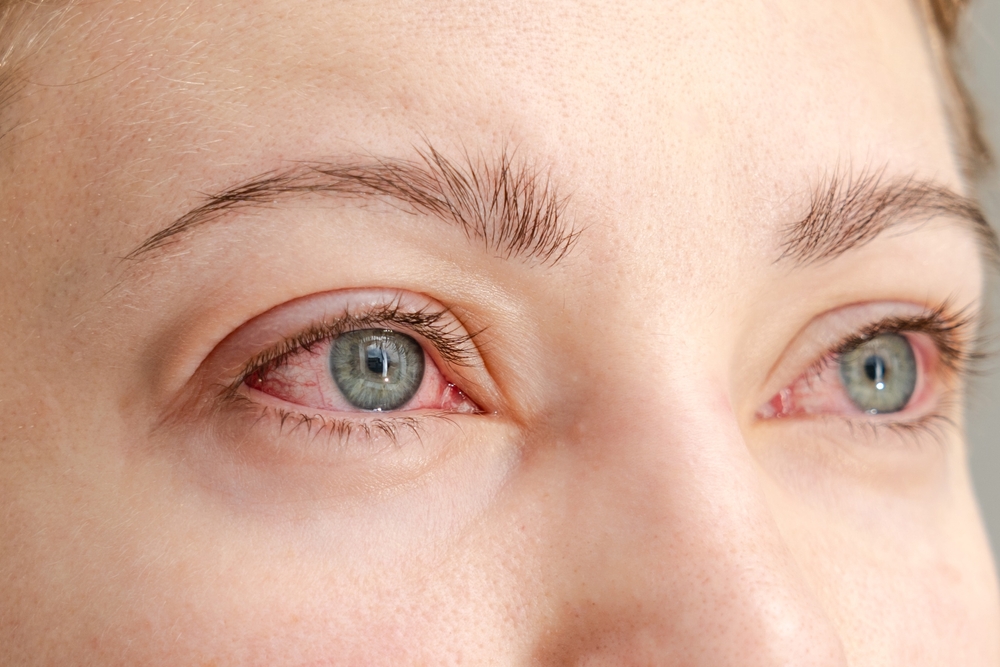
Rising temperatures also cause increased levels of pollen, which can lead to itchy, red eyes and a scratchy throat. When exposed to allergens, the body’s immune system releases histamines, causing these common allergy symptoms. The warmth in the air can make allergens like tree and grass pollen more prevalent, leaving your eyes irritated and your throat itchy. According to WebMD, itchy eyes and throat are common symptoms of allergies, often triggered by pollen. A dry or scratchy throat often follows because the body is trying to get rid of the irritation caused by these allergens.
In addition, the heat causes dust and other microscopic particles to circulate more freely, exacerbating the irritation. Eye irritation, in particular, can lead to swollen eyelids, tearing, and an overall feeling of discomfort. For many people, this creates a cycle where the more they rub their eyes or throat, the worse the symptoms become. It can also be harder to avoid allergens when you’re outdoors in warmer weather. Using allergy eye drops or throat lozenges can help alleviate the discomfort temporarily, but the underlying problem may persist in high-heat conditions.
3. Worsened Asthma Symptoms

For those with asthma, warmer weather can be especially problematic. Rising temperatures can lead to increased pollution, which, combined with allergens like pollen, can significantly worsen asthma symptoms. Airborne pollutants, such as ozone and particulate matter, become more concentrated during hot weather, leading to more severe breathing issues. Increased pollen counts also act as triggers, making it difficult for individuals with asthma to manage their condition.
When asthma symptoms worsen, you may experience more frequent coughing, shortness of breath, and chest tightness. Even if you’ve managed your asthma well in cooler temperatures, the heat may aggravate the condition. According to Orlando Health, extreme heat and humidity trap pollutants that irritate airways and increase asthma-related hospitalizations. Monitoring air quality and pollen forecasts while keeping medications handy can help reduce the severity of asthma attacks.
4. Increased Fatigue and Headaches
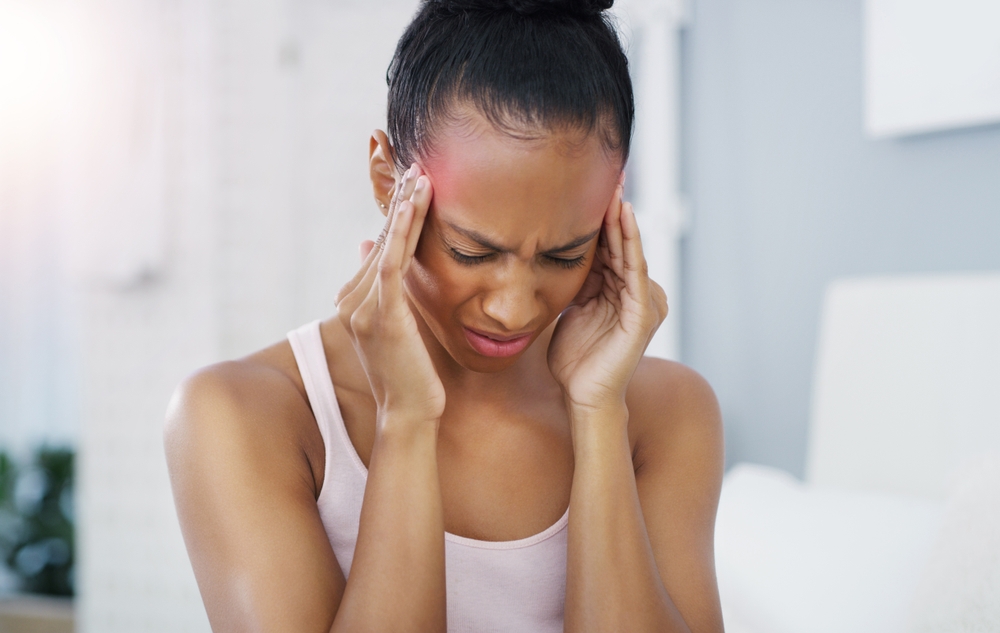
Higher temperatures can make allergy symptoms more intense, leading to increased fatigue and headaches. When your body is fighting off allergens like pollen, it uses a significant amount of energy, leaving you feeling tired. Heat can also make you more susceptible to dehydration, which exacerbates fatigue. Additionally, the inflammation caused by allergies can contribute to sinus pressure, often leading to painful headaches. As pollen levels rise with the heat, the strain on your immune system grows, leaving you feeling drained.
Frequent headaches can also be caused by sinus congestion, which becomes more common when allergens are in high supply. According to Healthline, dehydration and inflammation during warmer weather can worsen allergy-related fatigue and headaches. Taking rest breaks, staying hydrated, and limiting exposure to allergens can help manage these symptoms effectively.
5. Worsened Air Quality

Rising temperatures also contribute to worsening air quality, particularly in urban areas where pollution levels are already high. The combination of heat and pollutants like ozone can create smog, which is detrimental to those with respiratory allergies. Exposure to smog and poor air quality can aggravate symptoms such as coughing, wheezing, and shortness of breath, especially in individuals with asthma or other lung conditions. The heat encourages the release of more allergens, such as mold spores and pollen, which can linger in the air longer, worsening allergic reactions. This increased exposure to harmful pollutants can make breathing more difficult and exacerbate the overall symptoms of allergies.
To mitigate the effects of poor air quality, it’s essential to limit outdoor activities on days with high pollution or smog warnings. Monitoring air quality through apps or local news can help you stay informed about when it’s best to stay indoors. If you need to go outside, wearing a mask designed for filtering allergens or pollutants can offer some protection. Keeping windows closed and using air purifiers in your home can help reduce indoor air pollution. If you experience significant respiratory distress, consulting with a healthcare provider is crucial to managing symptoms.
6. More Frequent Coughing and Throat Clearing

As temperatures rise and allergens fill the air, you may notice an increase in coughing and throat clearing. When allergens enter your throat and respiratory system, they can cause irritation, which triggers coughing as your body tries to clear the airways. This can become especially uncomfortable during hot weather when the air is drier and allergens like pollen are abundant. The added stress on your respiratory system can also lead to a dry, persistent cough that lingers long after you’ve left the allergen-filled environment.
Coughing and throat clearing become especially noticeable during outdoor activities when pollen counts are high. The dryness of the air can further exacerbate these symptoms, causing discomfort in the throat and lungs. Over-the-counter antihistamines or cough drops may help provide temporary relief, but the underlying cause may remain due to the seasonal allergens. If you find yourself frequently coughing or clearing your throat, it’s important to take steps to limit exposure to allergens, including using air filters and keeping windows closed during peak allergy times. Persistent symptoms may require professional evaluation and treatment to manage effectively.
7. Difficulty Sleeping

Rising temperatures combined with increased allergen levels can disrupt your sleep. Allergies often cause nasal congestion, itchy eyes, and difficulty breathing, making it challenging to get a full night’s rest. The warm, humid air can also make it harder to cool down, leading to restless nights. As the temperature rises, so does your exposure to allergens like pollen, which can trigger a range of symptoms that affect your ability to fall or stay asleep.
Sleep deprivation can lead to a host of other health issues, including increased stress, decreased immune function, and more severe allergy symptoms. Using an air purifier, keeping windows shut at night, and taking antihistamines before bed can help reduce exposure to allergens. However, if your symptoms are still severe despite these measures, it might be worth consulting with an allergist. With the right treatment plan, you can manage your allergy symptoms and sleep more soundly, even during the allergy-heavy months.
8. More Frequent Sinus Infections

As temperatures rise and allergens increase, sinus infections become more common. Allergies cause inflammation in the nasal passages, which can block the sinuses and create an environment where bacteria can grow. When allergens like pollen and dust get trapped in the sinuses, it increases the risk of infection. The heat exacerbates this by drying out the sinuses and making them more susceptible to irritation.
Frequent sinus infections can leave you feeling tired, congested, and in pain. They often cause symptoms like facial pressure, headaches, and a thick nasal discharge. If you find that you’re more prone to sinus infections during warmer weather, it’s crucial to take extra care of your sinus health. Regularly using a saline nasal spray and staying hydrated can help clear out allergens and bacteria. If sinus infections become frequent, a visit to an ENT (ear, nose, and throat) specialist may be necessary to develop a long-term management plan.
9. Increased Sensitivity to Other Allergens

Rising temperatures can heighten your sensitivity to various allergens. When pollen counts are high, they can not only trigger seasonal allergies but also increase your sensitivity to dust mites, mold, and pet dander. This can create a cumulative effect, making allergy symptoms more intense. If you already suffer from asthma or hay fever, the warmer months can amplify these conditions. As allergens flood the air, your immune system becomes overwhelmed, leading to more severe reactions.
As the body reacts more strongly to allergens, it may start triggering additional sensitivities, such as skin reactions or digestive discomfort. Those who are typically able to tolerate certain allergens might find their threshold is lower during hot weather. Taking preventive measures like regular cleaning, using air filters, and monitoring pollen levels can help reduce exposure. If symptoms persist despite these efforts, consulting an allergist may be necessary to find an effective treatment. Managing allergies in a warming climate requires careful attention to both indoor and outdoor environments.
10. Increase in Respiratory Issues
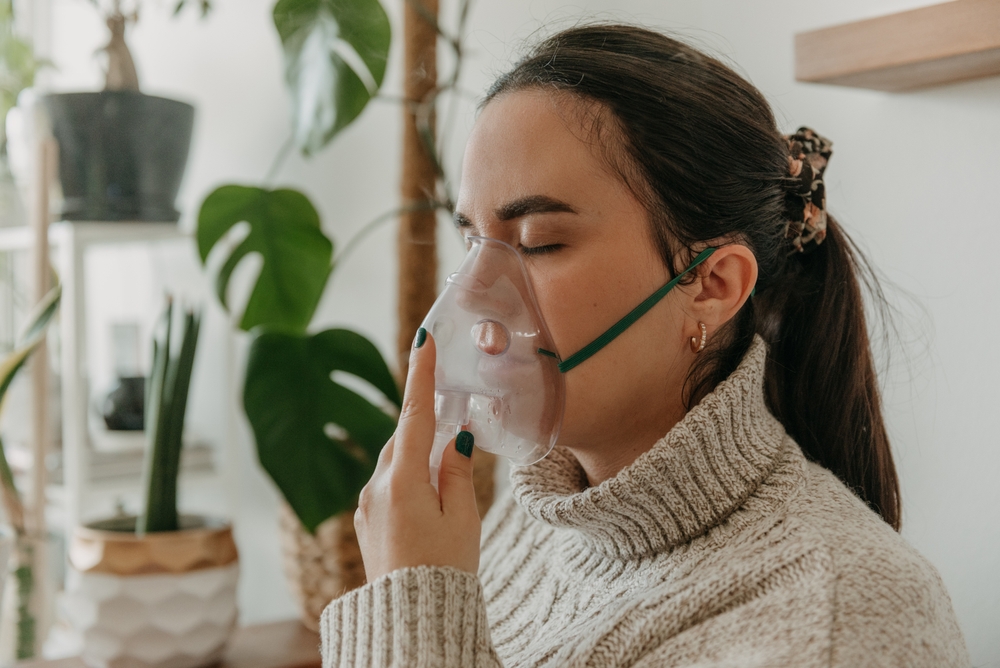
Warmer temperatures can exacerbate respiratory issues, especially for those already dealing with allergies. High temperatures can increase the concentration of air pollutants, such as ground-level ozone, which can worsen symptoms of asthma and other respiratory conditions. This makes it harder for the lungs to process oxygen, leading to shortness of breath, wheezing, and coughing. The combination of increased allergens and poor air quality can result in difficulty breathing and more frequent flare-ups.
During the summer months, it’s essential to monitor air quality, particularly on hot days when pollution levels tend to rise. On days with high pollen counts or poor air quality, it’s best to stay indoors as much as possible. Using air purifiers and keeping windows closed can help mitigate the effects of outdoor allergens. If you find that your respiratory issues are worsening during warmer months, it’s important to consult a healthcare provider to adjust your treatment plan.
11. Increased Risk of Dehydration
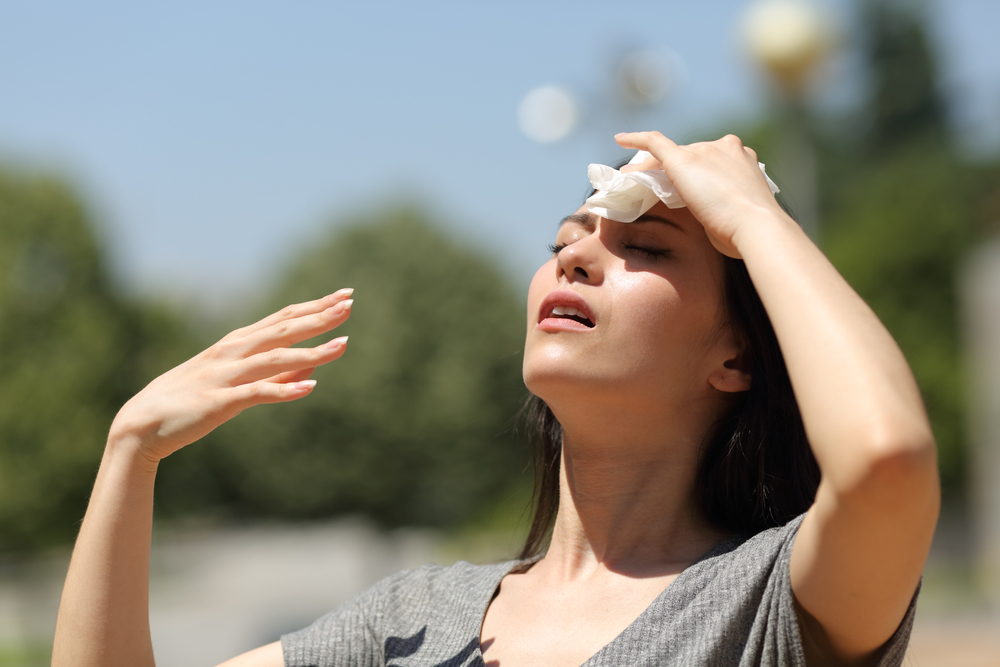
As temperatures rise, your body tends to sweat more in an attempt to cool itself down, which can lead to dehydration. This becomes particularly problematic for those who are already dealing with allergy symptoms, as dehydration can worsen conditions like dry throat and sinus congestion. Inadequate hydration can also reduce the body’s ability to produce mucus, making it harder to clear allergens from your nasal passages and respiratory system. The combination of hot weather and allergen exposure can exacerbate dehydration, making it harder to recover from allergy symptoms.
To combat this, it’s important to increase water intake during the hotter months to stay hydrated and maintain your body’s defense mechanisms. Drinking plenty of fluids can also help thin out mucus and reduce congestion, offering some relief from sinus-related issues. Hydration plays a key role in managing allergy symptoms, especially in the summer when both heat and allergens are at their peak. Drinking water consistently throughout the day, alongside using humidifiers indoors, can help maintain your body’s moisture levels. If you notice signs of dehydration, like dry mouth, fatigue, or dizziness, it’s vital to take action immediately.
12. Increased Risk of Skin Problems

The combination of rising temperatures and allergens can also lead to an increase in skin problems, especially for those with sensitive skin or pre-existing conditions like eczema. Pollen particles can get trapped on the skin, leading to rashes, hives, or general irritation. The heat can also exacerbate these symptoms by causing increased sweating, which can further irritate the skin. When allergens mix with sweat, it creates an ideal environment for the skin to become inflamed and itchy. Additionally, the higher humidity levels in summer can make the skin more prone to bacterial infections, which can worsen any skin condition.
To protect your skin, it’s important to shower after spending time outdoors to remove pollen and other allergens from your body. Using gentle, hypoallergenic skincare products can help soothe irritated skin and reduce flare-ups. Also, consider wearing light, breathable clothing that minimizes sweating and avoids friction on sensitive areas. For individuals prone to allergic skin reactions, it may be helpful to apply topical anti-itch creams or allergy relief lotions. If you notice persistent rashes, hives, or severe irritation, it’s advisable to seek medical attention to address underlying allergic reactions and receive proper treatment.
Natasha is a seasoned lifestyle journalist and editor based in New York City. Originally from Sydney, during a stellar two-decade career, she has reported on the latest lifestyle news and trends for major media brands including Elle and Grazia.


